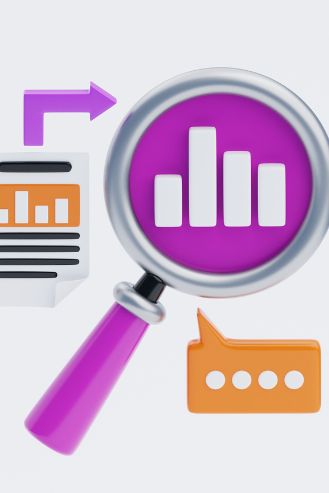
How to Build Effective Marketing Data Models for Better Business Insights
Building effective marketing data models is essential for businesses looking to make data-driven decisions in today’s competitive landscape. Marketing data models help organizations analyze customer behavior, optimize campaigns, and predict future trends with greater accuracy. This comprehensive guide will walk you through the process of creating robust marketing data models that drive meaningful business outcomes.

Understanding Marketing Data Models
Marketing data models are structured frameworks that organize and analyze marketing information to extract valuable insights. These models transform raw data into actionable intelligence, enabling marketers to understand customer journeys, measure campaign effectiveness, and allocate resources efficiently. By implementing sophisticated marketing data analytics models, businesses can gain a competitive edge through more precise targeting and personalization strategies.
The foundation of any effective marketing data model lies in its ability to connect disparate data sources and create a unified view of marketing performance. This holistic approach allows marketers to move beyond siloed analytics and develop a deeper understanding of how different marketing activities contribute to overall business objectives.
Types of Marketing Data Models
1. Attribution Models
Attribution models help marketers understand which touchpoints along the customer journey contribute most to conversions. Common attribution models include:
- First-touch attribution: Assigns full credit to the first interaction
- Last-touch attribution: Gives all credit to the final touchpoint before conversion
- Multi-touch attribution: Distributes credit across multiple touchpoints
- Time-decay attribution: Assigns more value to touchpoints closer to conversion
- Algorithmic attribution: Uses machine learning to determine credit distribution
2. Predictive Models
Predictive models use historical data to forecast future outcomes. These models can help with:
- Customer lifetime value (CLV) predictions
- Churn probability assessment
- Lead scoring and qualification
- Campaign performance forecasting
- Market trend analysis
3. Segmentation Models
Segmentation models divide customers into distinct groups based on shared characteristics, enabling more targeted marketing efforts. Common segmentation approaches include:
- Demographic segmentation (age, gender, income)
- Behavioral segmentation (purchase history, engagement level)
- Psychographic segmentation (values, interests, lifestyle)
- Geographic segmentation (location-based targeting)
- RFM (Recency, Frequency, Monetary) segmentation
Step-by-Step Guide to Building Marketing Data Models
Step 1: Define Clear Objectives
Before building any data model, establish specific business goals the model should address. Ask questions like:
- What specific marketing challenges are we trying to solve?
- What decisions will this model inform?
- How will we measure the model’s success?
- Who will use the insights generated by this model?
Step 2: Identify and Collect Relevant Data
Gather all necessary data sources that will feed into your model:
- CRM data (customer information, purchase history)
- Web analytics (site behavior, traffic sources)
- Campaign performance metrics
- Social media engagement data
- Market research and competitive intelligence
- Customer feedback and survey responses
Step 3: Clean and Prepare Your Data
Data preparation is crucial for model accuracy:
- Remove duplicate entries and correct errors
- Handle missing values appropriately
- Normalize data formats across sources
- Create consistent naming conventions
- Transform variables as needed (scaling, encoding categorical variables)
Step 4: Select the Right Modeling Approach
Choose modeling techniques aligned with your objectives and available data. Common approaches in AI-powered marketing automation include:
- Regression analysis for predicting continuous outcomes
- Classification models for categorical predictions
- Clustering algorithms for customer segmentation
- Time series analysis for forecasting trends
- Machine learning algorithms for complex pattern recognition
Step 5: Build and Train Your Model
Develop your model using appropriate tools and techniques:
- Split data into training and testing sets
- Select relevant features and variables
- Apply appropriate algorithms based on your modeling approach
- Train the model using historical data
- Tune parameters to optimize performance
Step 6: Validate and Test Your Model
Ensure your model performs reliably:
- Test against holdout data not used in training
- Evaluate performance using appropriate metrics (accuracy, precision, recall)
- Conduct sensitivity analysis to understand model limitations
- Compare against baseline or benchmark models
- Check for overfitting or underfitting issues
Step 7: Implement and Operationalize
Deploy your model into production:
- Integrate with existing marketing systems and workflows
- Create dashboards and reporting interfaces
- Establish automated data pipelines for model updates
- Document model methodology and assumptions
- Train team members on interpreting and using model outputs
Step 8: Monitor and Refine
Continuously improve your model over time:
- Track model performance against key metrics
- Update with new data regularly
- Adjust for changing market conditions
- Incorporate user feedback and business insights
- Refine and retrain as needed to maintain accuracy
Best Practices for Marketing Data Modeling
Focus on Data Quality
The accuracy of your model depends heavily on the quality of input data. Invest time in data governance practices, establish data quality standards, and implement regular data audits to ensure your models are built on reliable information.
Start Simple, Then Iterate
Begin with straightforward models that address specific business questions, then gradually increase complexity as you gain confidence and expertise. This approach allows for quicker wins and easier troubleshooting.
Combine Multiple Models
Different modeling approaches can provide complementary insights. Consider using ensemble methods that combine predictions from multiple models to improve overall accuracy and robustness.
Balance Complexity and Interpretability
While complex models might offer higher accuracy, they can be difficult to explain to stakeholders. Strike a balance between model sophistication and interpretability based on your organization’s needs and technical capabilities.
Incorporate Domain Expertise
Combine data-driven insights with marketing expertise. Subject matter experts can provide valuable context, help identify relevant variables, and validate model outputs against real-world experience.
Plan for Scale
Design your data modeling infrastructure to accommodate growing data volumes and increasing complexity. Consider cloud-based solutions and automated marketing analytics tools that can scale with your business needs.
Common Challenges and Solutions
Data Silos
Challenge: Marketing data often exists in disconnected systems across the organization.
Solution: Implement data integration platforms that connect disparate sources and create a unified data layer for modeling.
Data Privacy Concerns
Challenge: Increasing regulations around customer data usage limit what can be collected and analyzed.
Solution: Develop privacy-compliant modeling approaches that use anonymized or aggregated data where appropriate, and ensure all data usage adheres to relevant regulations.
Skill Gaps
Challenge: Building effective data models requires specialized skills that may not exist within marketing teams.
Solution: Invest in training, partner with data science teams, or consider user-friendly modeling tools designed for marketers.
Model Decay
Challenge: Marketing models can become less accurate over time as market conditions and consumer behaviors change.
Solution: Implement regular model monitoring and retraining processes to maintain accuracy and relevance.
Conclusion
Building effective marketing data models is a journey that requires careful planning, quality data, appropriate methodologies, and continuous refinement. By following the steps and best practices outlined in this guide, marketers can develop models that deliver valuable insights and drive better business decisions. As marketing continues to become more data-driven, the ability to build and leverage sophisticated data models will become an increasingly important competitive advantage.
Remember that successful marketing data modeling is not just about technical implementation but also about creating a data-driven culture within your organization. By democratizing access to model insights and fostering cross-functional collaboration, you can maximize the impact of your marketing data models and drive meaningful business growth.


